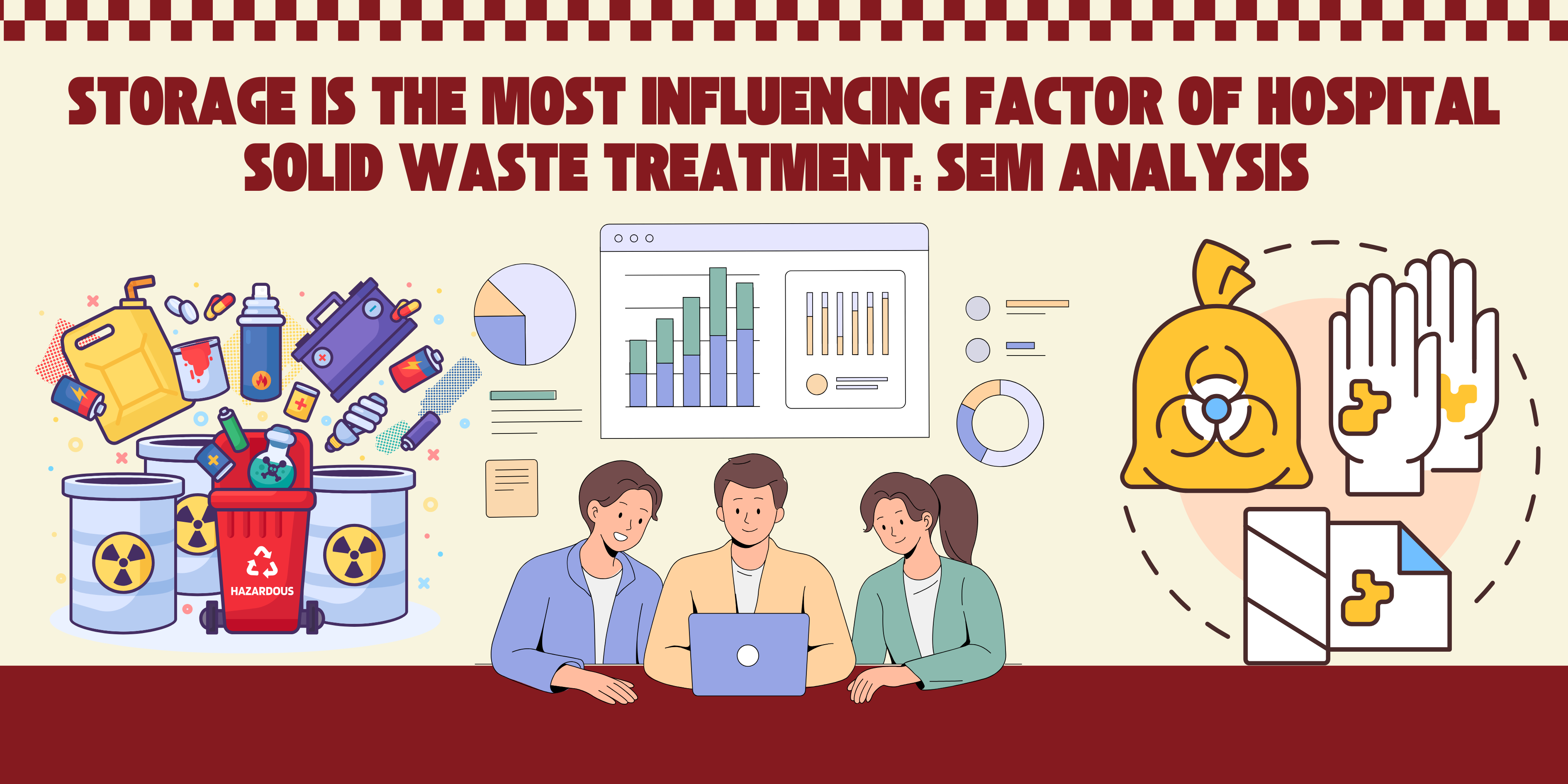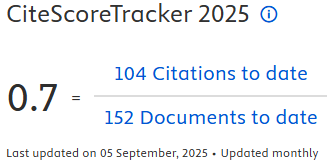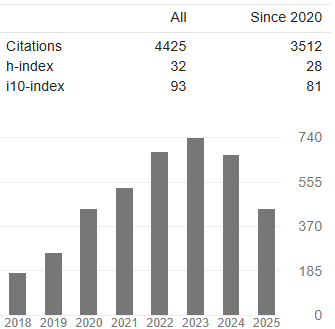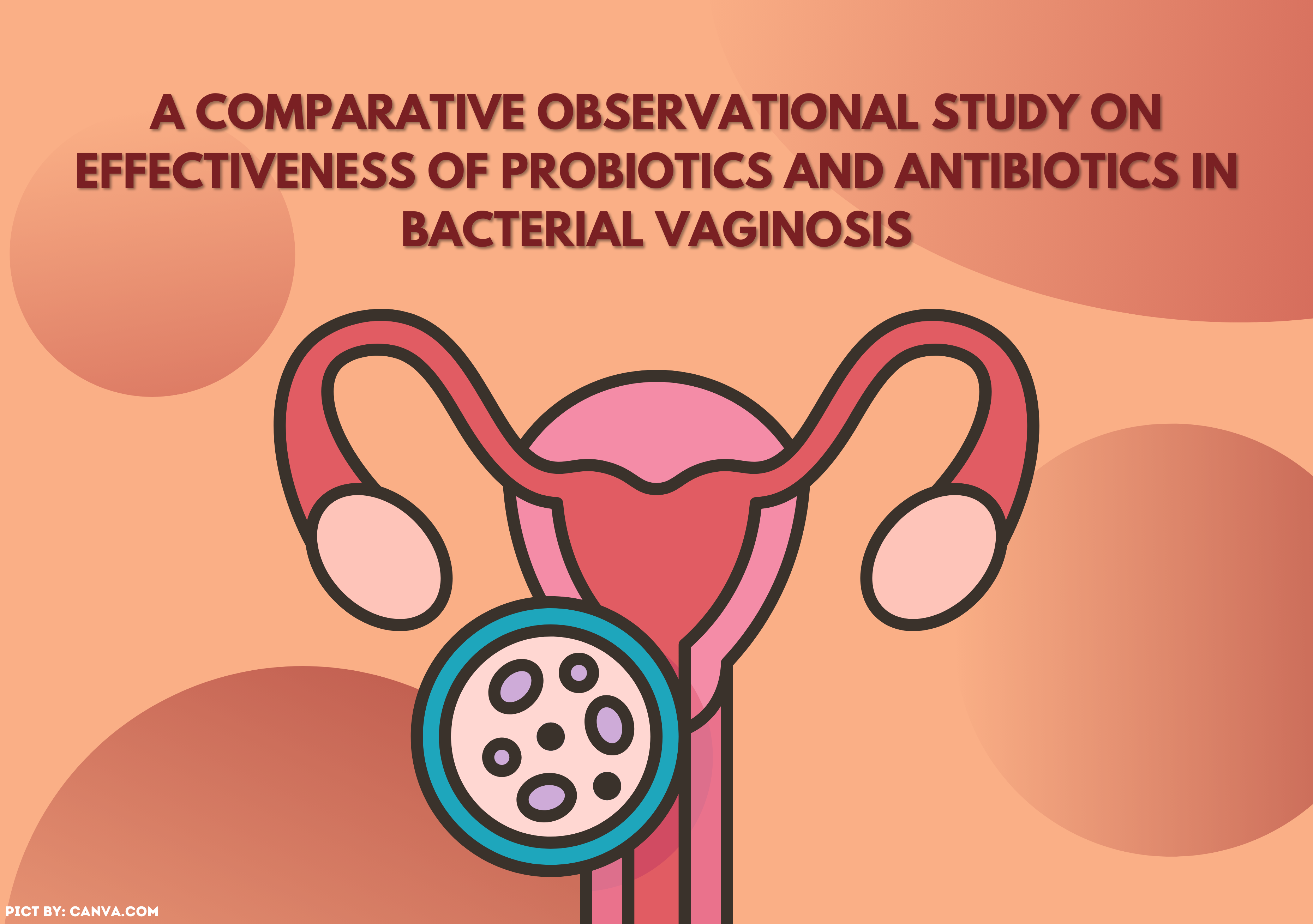STORAGE IS THE MOST INFLUENCING FACTOR OF HOSPITAL SOLID WASTE TREATMENT: SEM ANALYSIS

Downloads
Introduction: From primary data, it was found that 65% of solid waste generation occurred in 12 hospitals in West Sumatra. "2,839 health facilities in West Sumatra, produced 1,899.15 tonnes of medical solid waste including hazardous and toxic materials (B3)," the government stated in March 2020. If nothing is done to address this poor waste management, it will negatively affect society. It is difficult for hospital managers to improve the waste processing system because the stages or factors that have a significant impact on poor waste processing are unknown. Aims: This research aims to find an appropriate medical solid waste treatment model that can be used in hospitals by analyzing the stages and factors involved in processing medical solid waste. Method: Structural Equation Modeling analysis was used in this cross-sectional research. The population study was 12 hospitals and the research sample was taken by calculating Wayne W. Daniel's formula to obtain 120 hospital waste treatment officers. This study started in September 2021 to March 2022. Primary data was collected by writing notes from observations by recording the results of observations, documentation, asking sources, and questionnaires filled out by waste managers and waste cleaning officers. Results: The research results show that of the 4 independent variables influencing medical solid waste processing, storage is the most dominant factor affecting waste processing. Conclusion: Sorting and storage variables influence poor hospital waste management in West Sumatra.
Al-Khatib, Issam A., Derar Eleyan, and Joy Garfield. 2016. “A System Dynamics Approach for Hospital Waste Management in a City in a Developing Country: The Case of Nablus, Palestine.” Environmental Monitoring and Assessment 188:1–9. doi: https://doi.org/10.1007/s10661-016-5487-9
Ali, Mustafa, Wenping Wang, Nawaz Chaudhry, and Yong Geng. 2017. “Hospital Waste Management in Developing Countries: A Mini Review.” Waste Management & Research 35(6):581–92. https://doi.org/10.1177/0734242X17691344
Anstey, Matthew H., Louise Trent, Deepak Bhonagiri, Naomi E. Hammond, Serena Knowles, Forbes McGain, Naomi Hammond, Amy Freeman-Sanderson, Subodh Ganu, and Belinda Howe. 2023. “How Much Do We Throw Away in the Intensive Care Unit? An Observational Point Prevalence Study of Australian and New Zealand ICUs.” Critical Care and Resuscitation 25(2):78–83. https://doi.org/10.1016/j.ccrj.2023.05.004
Askar Ilyas, Anwar Daud, M. 2015. Regional-Based Hospital Medical Waste Management Model in South Sulawesi Province. Makasar.
Attrah, Mustafa, Amira Elmanadely, Dilruba Akter, and Eldon R. Rene. 2022. “A Review on Medical Waste Management: Treatment, Recycling, and Disposal Options.” Environments 9(11):146. https://doi.org/10.3390/environments9110146
Aung, Thiri Shwesin, Shengji Luan, and Qiyong Xu. 2019. “Application of Multi-Criteria-Decision Approach for the Analysis of Medical Waste Management Systems in Myanmar.” Journal of Cleaner Production 222:733–45. https://doi.org/10.1016/j.jclepro.2019.03.049
Bokhoree, C., Y. Beeharry, T. Makoondlall-Chadee, T. Doobah, and N. Soomary. 2014. “Assessment of Environmental and Health Risks Associated with the Management of Medical Waste in Mauritius.” APCBEE Procedia 9:36–41. https://doi.org/10.1016/j.apcbee.2014.01.007
Caniato, Marco, Terry Tudor, and Mentore Vaccari. 2015. “Understanding the Perceptions, Roles and Interactions of Stakeholder Networks Managing Health-Care Waste: A Case Study of the Gaza Strip.” Waste Management 35:255–64. https://doi.org/10.1016/j.wasman.2014.09.018
Chaerul, Mochammad, Masaru Tanaka, and Ashok V Shekdar. 2008. “A System Dynamics Approach for Hospital Waste Management.” Waste Management 28(2):442–49. https://doi.org/10.1016/j.wasman.2007.01.007
Chen, Yang, Liyuan Liu, Qinzhong Feng, and Gang Chen. 2012. “Key Issues Study on the Operation Management of Medical Waste Incineration Disposal Facilities.” Procedia Environmental Sciences 16:208–13. https://doi.org/10.1016/j.proenv.2012.10.029
Clark, Andrea L. 2018. “Waste Management Minimization Strategies in Hospitals.”
Debere, Mesfin Kote, Kassahun Alemu Gelaye, Andamlak Gizaw Alamdo, and Zemedu Mehamed Trifa. 2013. “Assessment of the Health Care Waste Generation Rates and Its Management System in Hospitals of Addis Ababa, Ethiopia, 2011.” BMC Public Health 13(1):1–9. https://doi.org/10.1186/1471-2458-13-28
El-Ramady, Hassan, Eric C. Brevik, Heba Elbasiouny, Fathy Elbehiry, Megahed Amer, Tamer Elsakhawy, Alaa El-Dein Omara, Ahmed A. Mosa, Ayman M. El-Ghamry, and Neama Abdalla. 2021. “Planning for Disposal of COVID-19 Pandemic Wastes in Developing Countries:
A Review of Current Challenges.” Environmental Monitoring and Assessment 193(9):592. https://doi.org/10.1007/s10661-021-09350-1
Fadaei, Abdolmajid. 2023. “Comparison of Medical Waste Management Methods in Different Countries: A Systematic Review.” Reviews on Environmental Health 38(2):339–48. https://doi.org/10.1515/reveh-2021-0170
Garson, G. David. 2022. Factor Analysis and Dimension Reduction in R: A Social Scientist’s Toolkit. Taylor & Francis. https://doi.org/10.4324/9781003279693
Ikeda, Yukihiro. 2019. “Estimation of Infectious Medical Waste Quantities on a Per-Patient Basis: An Observational Study at a Hospital.” The Open Waste Management Journal 12(1). https://doi.org/10.2174/1874347101912010001
Indonesian Government. 2014. Republic of Indonesia Government Regulation Number 101 of 2014 Concerning Management of Hazardous and Toxic Waste. Jakarta.
Indonesian Ministry of Environment. 2018. “Peta Jalan (Road Map) Pengelolaan Limbah B3 Dari Fasilitas Pelayanan Kesehatan.”
Indonesian Ministry of Health. 2014. Minister of Health Regulation Number 56 of 2014 Concerning Hospital Classification and Licensing. Jakarta.
Indonesian Ministry of Health. 2019. Minister of Health Regulation Number 7 of 2019 Concerning Environmental Health in Indonesian Hospitals. Jakarta.
Jiang, Chen, Zhiyuan Ren, Yajing Tian, and Kaixiang Wang. 2012. “Application of Best Available Technologies on Medical Wastes Disposal/Treatment in China (with Case Study).” Procedia Environmental Sciences 16:257–65. https://doi.org/10.1016/j.proenv.2012.10.036
Korkut, Eyüp Nafiz. 2018. “Estimations and Analysis of Medical Waste Amounts in the City of Istanbul and Proposing a New Approach for the Estimation of Future Medical Waste Amounts.” Waste Management 81:168–76. https://doi.org/10.1016/j.wasman.2018.10.004
Kuchibanda, Kizito, and Aloyce W. Mayo. 2015. “Public Health Risks from Mismanagement of Healthcare Wastes in Shinyanga Municipality Health Facilities, Tanzania.” The Scientific World Journal 2015. https://doi.org/10.1155/2015/981756
Kumar, Ramesh, Ratana Somrongthong, and Jamil Ahmed. 2016. “Effect of Medical Waste Management Trainings on Behavior Change among Doctors versus Nurses and Paramedical Staff in Pakistan.” Journal of Ayub Medical College Abbottabad 28(3):493–96.
Letho, Zimba, Tshering Yangdon, Chhimi Lhamo, Chandra Bdr Limbu, Sonam Yoezer, Thinley Jamtsho, Puja Chhetri, and Dawa Tshering. 2021. “Awareness and Practice of Medical Waste Management among Healthcare Providers in National Referral Hospital.” PloS One 16(1):e0243817. https://doi.org/10.1371/journal.pone.0243817
Liu, Yang, Alan Medlar, and Dorota Glowacka. 2023. “On the Consistency, Discriminative Power and Robustness of Sampled Metrics in Offline Top-n Recommender System Evaluation.” Pp. 1152–57 in Proceedings of the 17th ACM Conference on Recommender Systems. https://doi.org/10.1145/3604915.3610651
Maina, Jaccobed Wanjiku. 2018. “Knowledge, Attitude and Practice of Staff on Segregation of Hospital Waste: A Case Study of a Tertiary Private Hospital in Kenya.” Eur Sci J 14(9):1857–7881. https://doi.org/10.19044/esj.2018.v14n9p401
Mantzaras, Gerasimos, and Evangelos A. Voudrias. 2017. “An Optimization Model for Collection, Haul, Transfer, Treatment and Disposal of Infectious Medical Waste: Application to a Greek Region.” Waste Management 69:518–34.
https://doi.org/10.1016/j.wasman.2017.08.037
Mmereki, Daniel, Andrew Baldwin, Baizhan Li, and Meng Liu. 2017. “Healthcare Waste Management in Botswana: Storage, Collection, Treatment and Disposal System.” Journal of Material Cycles and Waste Management 19:351–65. https://doi.org/10.1007/s10163-015-0429-0
Muduli, K., and A. Barve. 2012. “Barriers to Green Practices in Health Care Waste Sector: An Indian Perspective.” International Journal of Environmental Science and Development 3(4):393. https://doi.org/10.7763/IJESD.2012.V3.254
Nguyen, Duc Luong, X. T. Bui, and T. H. Nguyen. 2014. “Estimation of Current and Future Generation of Medical Solid Wastes in Hanoi City, Vietnam.” Int. J. Waste Resour 4(2):1–5. https://doi.org/10.4172/2252-5211.1000139
Nugraha, Candra. 2020. “Review of Infectious Medical Waste Management Policy for Handling Corono Virus Disease (COVID-19).” Jurnal Untuk Masyarakat Sehat (JUKMAS) 4. https://doi.org/10.52643/jukmas.v4i2.1004
Omar, Dasimah, Siti Nurshahida Nazli, A. Subramaniam, and L. Karuppannan. 2012. “Clinical Waste Management in District Hospitals of Tumpat, Batu Pahat and Taiping.” Procedia-Social and Behavioral Sciences 68:134–45. https://doi.org/10.1016/j.sbspro.2012.12.213
Osman, Ayan Muse, Zubeda Ukundimana, Fwangmun B. Wamyil, Abdulfatah Abdu Yusuf, and Kabera Telesphore. 2023. “Quantification and Characterization of Solid Waste Generated within Mulago National Referral Hospital, Uganda, East Africa.” Case Studies in Chemical and Environmental Engineering 7:100334. https://doi.org/10.1016/j.cscee.2023.100334
Peng, Jie, Xunlian Wu, Rongli Wang, Cui Li, Qing Zhang, and Daiqing Wei. 2020. “Medical Waste Management Practice during the 2019-2020 Novel Coronavirus Pandemic: Experience in a General Hospital.” American Journal of Infection Control 48(8):918–21. Https://Doi.Org/10.1016/J.Ajic.2020.05.035
Pratiwi, Desi Dwi. 2020. “Evaluasi Aspek Manajemen Penampungan Sementara Limbah Bahan Berbahaya Dan Beracun (B3) Di Rsia Perdana Medica Surabaya Berdasarkan Peraturan Menteri Kesehatan Nomor 7 Tahun 2019 Tentang Kesehatan Lingkungan Rumah Sakit.”
Ramadiani, Ramadiani. 2016. “Structural Equation Model Untuk Analisis Multivariate Menggunakan Lisrel.” Informatika Mulawarman: Jurnal Ilmiah Ilmu Komputer 5(1):14–18.
Udofia, Emilia Asuquo, Julius N. Fobil, and Gabriel Gulis. 2015. “Solid Medical Waste Management in Africa.” African Journal of Environmental Science and Technology 9(3):244–54. https://doi.org/10.5897/AJEST2014.1851
Valonda, Debbie, and Ema Hermawati. 2022. “Pengelolaan Limbah Medis Padat Rumah Sakit Pada Masa Pandemi Covid-19 Di RSUD Koja Jakarta.” Avicenna: Jurnal Ilmiah 17(1):14–20. https://doi.org/10.36085/avicenna.v17i1.2751
Wilujeng, Susi A., Enri Damanhuri, And Mochammad Chaerul. 2019. “Medical Waste Generation From Community Health Centers In Surabaya And The Improvement In Its Management.” Pollution Research Journal.
World Health Organization. 2018. “Health-Care Waste.” 8 February 2018. Retrieved December 16, 2023
Yasril, Abdi Iswahyudi, and Wijayantono Wijayantono. 2022. “THE USAGE OF STRUCTURAL EQUATION MODELING (SEM) METHOD IN HYPERTENSION OCCURRING AT ACHMAD MOCHTAR HOSPITAL BUKITTINGGI.” Jurnal Biometrika Dan Kependudukan (Journal of Biometrics and Population) 11(02 SE-Articles):134–44. https://doi.org/10.20473/jbk.v11i02.2022.134-144
Copyright (c) 2025 The Indonesian Journal of Public Health

This work is licensed under a Creative Commons Attribution-NonCommercial-ShareAlike 4.0 International License.
- The authors agree to transfer the transfer copyright of the article to The Indonesian Journal of Public Health effective if and when the paper is accepted for publication.
- Authors and other parties are bound to the Creative Commons Attribution-NonCommercial-ShareAlike 4.0 International License for the published articles, legal formal aspect of journal publication accessibility refers to Creative Commons Attribution-NonCommercial-ShareAlike 4.0 International License (CC BY-NC-SA), implies that:
- Attribution ” You must give appropriate credit, provide a link to the license, and indicate if changes were made. You may do so in any reasonable manner, but not in any way that suggests the licensor endorses you or your use.
- NonCommercial ” You may not use the material for commercial purposes.
- ShareAlike ” If you remix, transform, or build upon the material, you must distribute your contributions under the same license as the original.































